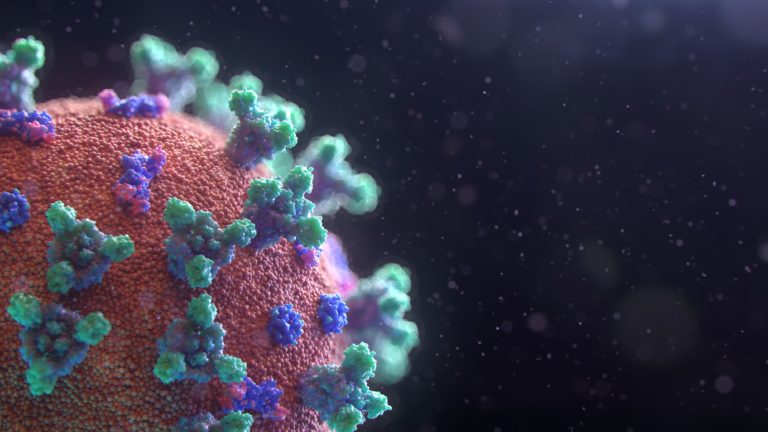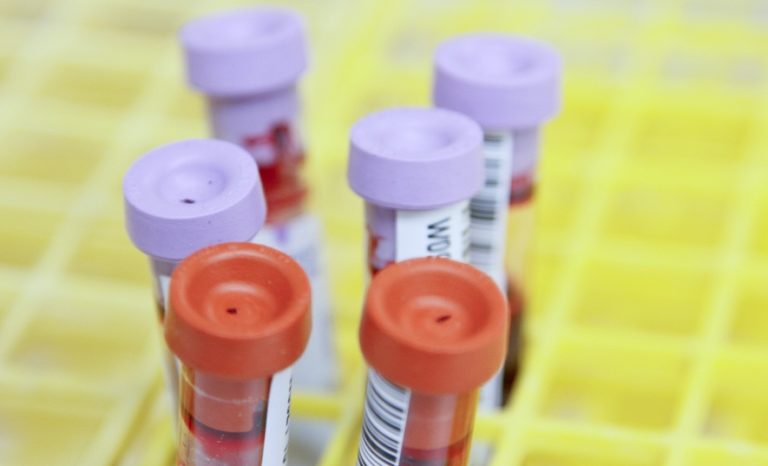As of April-2020, There are 5 vaccine candidates and 21 drug candidates are under the clinical stage of development
There are more than 70 drug candidate under pre-clinical stage of development
Coronavirus disease 2019 (COVID-19) is caused by a novel coronavirus which is named as severe acute respiratory syndrome coronavirus 2 (SARS-CoV-2; formerly called 2019-nCoV).
- It was first identified amid an outbreak of respiratory illness cases in Wuhan City, Hubei Province, China.
- The WHO declared the COVID-19 outbreak a global health emergency on On January 30, 2020. On March 11, 2020, It was declared as a global pandemic by WHO
- It is noted that its first such designation since declaring H1N1 influenza a pandemic in 2009.
There is no drug, biologicals, vaccines approved for the treatment of COVID19. The following categories of drugs are under development:
- Antiviral
- Anti Inflammatory
- Plasma therapy
- Vaccines
Kaletra:
- It was tested by AbbVie’s for COVID19. It is a combination of lopinavir and ritonavir. Lopinavir is an inhibitor of the HIV protease.
- Ritonavir inhibits the CYP3A-mediated metabolism of lopinavir, thereby providing increased plasma levels of lopinavir.
- “Kaletra failed across the board in a 199-patient clinical trial. It didn’t a top standard of care at improving clinical symptoms, extending lifespan or cutting viral shedding in patients hospitalized with severe COVID-19, results from a study published Wednesday in The New England Journal of Medicine show”
https://clinicaltrials.gov/ct2/show/NCT00234923
(Ganovo + Ritonavir):
- It is being evaluated by Ascletis. Danoprevir (Ganovo) is an NS3/4A protease inhibitor. This open, controlled Phase IV trial will evaluate the efficacy and safety of Danoprevir sodium tablet in hospitalized patients infected with SARS-CoV-2.
- The HCV NS3/4A protease involves in viral replication and suppressive effects on host response to viral infection.
- Ritonavir inhibits the HIV viral proteinase enzyme that normally cleaves the structural and replicative proteins that arise from major HIV genes, such as gag and pol.
Study Title: Efficacy and Safety of Ganovo (Danoprevir) Combined With Ritonavir in the Treatment of SARS-CoV-2 Infection.
https://clinicaltrials.gov/ct2/show/NCT04345276?intr=Danoprevir&spons=ascletis&phase=3&draw=2&rank=1
Actemra:
- It is a brand name for Tocilizumab. It is being tested by Roche for COVID19
Mechanism of action: - “Tocilizumab binds to both soluble and membrane-bound IL-6 receptors (sIL-6R and mIL-6R), and has been shown to inhibit IL-6-mediated signalling through these receptors.
- IL-6 is a pleiotropic pro-inflammatory cytokine produced by a variety of cell types including T- and B-cells, lymphocytes, monocytes and fibroblasts.
- IL-6 has been shown to be involved in diverse physiological processes such as T-cell activation, induction of immunoglobulin secretion, initiation of hepatic acute-phase protein synthesis, and stimulation of hematopoietic precursor cell proliferation and differentiation.
- IL-6 is also produced by synovial and endothelial cells leading to local production of IL-6 in joints affected by inflammatory processes such as rheumatoid arthritis.”
As of 19th Mar-2020, Roche announced that “we are working with the Food & Drug Administration (FDA) to initiate a randomised, double-blind, placebo-controlled Phase III clinical trial in collaboration with the Biomedical Advanced Research and Development Authority (BARDA), a part of the US Health and Human Services Office of the Assistant Secretary for Preparedness and Response (ASPR), to evaluate the safety and efficacy of Actemra®/RoActemra® (tocilizumab) plus standard of care in hospitalised adult patients with severe COVID-19 pneumonia compared to placebo plus standard of care”
https://www.roche.com/media/releases/med-cor-2020-03-19.htm
Lenzilumab:
It is being tested by Humanigen for COVID19. FDA Approved initiation of Humanigen’s Phase III Study of Lenzilumab in COVID-19 Patients.
It is multi-center, randomized, placebo-controlled, double-blinded Phase III study enrollment to focus on adult, hospitalized patients with COVID-19 pneumonia and at high risk of progression to respiratory failure.
https://clinicaltrials.gov/ct2/show/NCT04351152?intr=Lenzilumab&draw=2&rank=2
Mechanism of action:
“A recombinant monoclonal antibody against the cytokine granulocyte macrophage colony-stimulating factor (GM-CSF), with potential immunomodulating activity. Upon administration, lenzilumab binds to and neutralizes GM-CSF.
This prevents GM-CSF binding to the GM-CSF receptor, which is a heterodimeric protein expressed on myeloid progenitor cells, and prevents GM-CSF-mediated signaling.
This may induce apoptosis in and inhibit proliferation of cancer cells that overproduce GM-CSF. GM-CSF plays a key role in the differentiation and proliferation of monocytes, macrophages and granulocytes; elevated levels of GM-CSF are associated with certain autoimmune diseases, inflammatory diseases, and cancers”
https://www.cancer.gov/publications/dictionaries/cancer-drug/def/lenzilumab
CD24Fc:
- It is being tested by Oncoimmune for COVID19
Mechanism of action:
“CD24Fc has a dual mechanism of action: - First, CD24Fc binds DAMPs, trapping the inflammatory stimuli to prevent their interaction with TLR receptors
- Second, CD24Fc binds Siglec G/10 and regulates host response to tissue injuries Siglec G/10-associated SHP1 inhibitory signalling
- Both mechanisms likely act in concert to modulate immune responses.” http://www.oncoimmune.com/product-development/
Registered study: Phase III study registered with USFDA.
Study objective:
“The study is designed as a randomized, placebo-controlled, double blind, multicenter, Phase III trial to compare two COVID-19 treatment regimens in hospitalized adult subjects who are diagnosed with severe COVID 19.”
https://clinicaltrials.gov/ct2/show/NCT04317040?intr=CD24Fc&draw=2&rank=2
Prezcobix:
Shanghai Public health clinical centre is developing this drug for COVID19.
PREZCOBIX is a fixed-dose combination product containing 800 mg of darunavir and 150 mg of cobicistat.
“Darunavir, a HIV protease inhibitor, prevents HIV replication through binding to the enzyme, stopping the dimerization and the catalytic activity of HIV-1 protease. In particular, it inhibits the cleavage of HIV encoded Gag-Pol proteins.
- Mechanism of Action:
- cobicistat acts as a pharmacokinetic enhancer by inhibiting cytochrome P450 3A isoforms (CYP3A) and therefore increases the systemic exposure of coadministered agents that are metabolized by CYP3A enzymes”
- It is an interventional randomized Phase III study to evaluate the efficacy and safety of Darunavir and Cobicistat for Treatment of COVID-19 (DC-COVID-19) https://clinicaltrials.gov/ct2/show/NCT04252274
Colchicine:
On 8-April-2020, it was announced that “The Montreal Heart Institute (MHI) Research Centre has collaborated with New York City’s NYU Grossman School of Medicine for a new COVID-19 clinical study.
The clinical study, dubbed COLCORONA, will assess whether colchicine will serve as an effective treatment to prevent the phenomenon of major inflammatory storm present in adults suffering from severe complications related to COVID-19.”
- “COLCORONA trial will enrol around 6,000 participants who will be followed for 30 days and initial results will be revealed a few days upon the completion of a study.”
Study Description: - “This is a phase 3, multi-center, randomized, double-blind, placebo-controlled multicenter study to evaluate the efficacy and safety of colchicine in adult patients diagnosed with COVID-19 infection and have at least one high-risk criterion.
Kevzara:
It is a brand name of sarilumab. Coronavirus disease 2019 (COVID-19) is caused by a novel coronavirus which is named as severe acute respiratory syndrome coronavirus 2 (SARS-CoV-2; formerly called 2019-nCoV). Kevzara: It is a brand name of sarilumab.
“Kevzara was jointly developed by Sanofi and Regeneron under a global collaboration agreement. Kevzara is a fully-human monoclonal antibody. Kevzara binds specifically to the IL-6 receptor, and has been shown to inhibit IL-6-mediated signaling.
- IL-6 is an immune system protein produced in increased quantities in patients with rheumatoid arthritis and has been associated with disease activity, joint destruction and other systemic problems.
- Kevzara is being investigated for its ability to reduce the overactive inflammatory immune response associated with COVID-19 based on evidence of markedly elevated levels of IL-6 in severely ill patients infected with coronaviruses.
- Phase 2/3 trial initiated in Italy, Spain, Germany, France, Canada and Russia and is enrolling patients. Sanofi is leading trials outside the U.S., while Regeneron is leading U.S. trials
First patient outside U.S. treated in global Kevzara® (sarilumab) clinical trial program for patients with severe COVID-19″
https://www.sanofi.com/en/media-room/press-releases/2020/2020-03-30-07-00-00
- About the Trial:
- This Phase 2/3, randomized, double-blind, placebo-controlled trial uses an adaptive design to evaluate the safety and efficacy of Kevzara in adults hospitalized with serious complications from COVID-19.
- To enter the trial, patients must have pneumonia and be hospitalized with laboratory-confirmed COVID-19 that is classified as severe or critical, or who are suffering from multi-organ dysfunction. After receiving the study dose, patients will be assessed for 60 days, or until hospital discharge or death.
- In the Phase 2 part of the trial, patients will be randomized 2:2:1 into three groups: Kevzara higher dose, Kevzara lower dose and placebo.
The Phase 2 findings will be utilized in an adaptive manner to determine transition into Phase 3, helping to determine the endpoints, patient numbers and doses.
- If the trial continues with all three treatment arms to the end, it is expected to enroll approximately 300 patients, depending on the status of the COVID-19 outbreak and the proportion of patients with severe COVID-19.” https://clinicaltrials.gov/ct2/show/NCT04315298
Hydroxychloroquine:
On 17-Mar 2020, the University of Minnesota announced to launch a clinical trial on a post-exposure treatment for coronavirus COVID-19 disease.
Hydroxychloroquine inhibits terminal glycosylation of ACE2, the receptor that SARS-CoV and SARS-CoV-2 target for cell entry.
https://med.umn.edu/news-events/covid-19-clinical-trial-launches-university-minnesota
Study objectives: it is a randomized interventional Phase II/III study
- To test if post-exposure prophylaxis with hydroxychloroquine can prevent symptomatic COVID-19 disease after known exposure to the SARS-CoV-2 coronavirus.
- To test if early preemptive hydroxychloroquine therapy can prevent disease progression in persons with known symptomatic COVID-19 disease, decreasing hospitalizations and symptom severity.
https://clinicaltrials.gov/ct2/show/NCT04308668
Avigan:
On 31-Mar-2020, FUJIFILM Toyama Chemical Co., Ltd. (President: Junji Okada) has announced the initiation of Phase III clinical trial to evaluate the safety and efficacy of influenza antiviral drug “Avigan Tablet” (generic name: favipiravir) in Japan for patients of COVID-19, a respiratory infection caused by the novel Coronavirus (SARS-CoV-2).
Avigan, approved for manufacture and sale as an influenza antiviral drug in Japan, has a mechanism of action for selectively inhibiting RNA polymerase involved in influenza viral replication.
Due to this mechanism, it is expected that Avigan may potentially have an antiviral effect on the new coronavirus as it is classified into the same type of single-stranded RNA virus like influenza, and its clinical application to treat COVID-19 is now under study.”
https://www.fujifilm.com/jp/en/news/hq/3211
Avastin:
It is brand name for Bevacizumab. It is being tested by Qilu Hospital of Shandong University for COVID19
Mechanism of action: It acts by selectively binding circulating VEGF, thereby inhibiting the binding of VEGF to its cell surface receptors. This inhibition leads to a reduction in microvascular growth of tumor blood vessels and thus limits the blood supply to tumor tissues”
Study title: It is open level Phase 2/3 interventional study in Severe or Critical Patients With COVID-19 Pneumonia (BEST-CP)
https://clinicaltrials.gov/ct2/show/NCT04275414
Remdesivir:
” Remdesivir is a prodrug that metabolizes into its active form GS-441524.
- An adenosine nucleotide analog, GS-441524 interferes with the action of viral RNA-dependent RNA polymerase and evades proofreading by viral exoribonuclease (ExoN), causing a decrease in viral RNA production.
- It was unknown whether it terminates RNA chains or causes mutations in them. However, it has been learned that the RNA-dependent RNA polymerase of Ebola virus is inhibited for the most part by delayed chain termination”
- “Gilead has initiated two Phase 3 clinical studies to evaluate the safety and efficacy of remdesivir in adults diagnosed with COVID-19 following the U.S. Food and Drug Administration’s (FDA) rapid review and acceptance of Gilead’s investigational new drug (IND) filing.
Leronlimab (PRO140):
It is being tested for COVID19 by CytoDyn.
On March 27, 2020 CytoDyn Inc.(“CytoDyn” or the “Company”), a late-stage biotechnology company developing leronlimab (PRO 140), a CCR5 antagonist with the potential for multiple therapeutic indications, announced that three-day results post-leronlimab treatment of the first four patients under an Emergency Investigational New Drug (EIND) granted by the U.S. Food and Drug Administration (FDA).
A total of seven patients have been enrolled thus far under EIND in the same leading medical center in the New York City area. The treatment with leronlimab is targeted as a therapy for patients who experience respiratory complications as a result of contracting SARS-CoV-2 causing the Coronavirus Disease 2019 (COVID-19).
Aviptadil:
On 29-Mar-2020, it was announced that “The US FDA has issued a “Study May Proceed” letter to NeuroRx, a Delaware Corporation within 24 hours of NeuroRx’s IND application. In partnership with Relief Therapeutics “
Randomized, placebo-controlled trial”
“Relief Therapeutics holds FDA and EU orphan drug designations for the use of VIP to treat ARDS, pulmonary hypertension, and sarcoidosis. Relief also holds a US patent”
Mechanism of action:
“Aviptadil is a patented form of Vasoactive Intestinal Polypeptide (VIP) VIP is known to have potent anti-cytokine effects in numerous animal models and in phase 1 and phase 2 human studies”
Study title: It is Phase II Randomized Interventional multicenter trial of Intravenous Aviptadil for COVID-19 Associated Acute Respiratory Distress (COVID-AIV).
https://relieftherapeutics.com/fda-grants-ind-study-may-proceed-for-covid-19-trial-to-neurorx-inc-in-partnership-with-relief-therapeutics-sixrlf-for-treatment-of-acute-respiratory-distress/
://clinicaltrials.gov/ct2/show/NCT04311697
SNG001:
It is Interferon beta which is being evaluated for COVID19 by Synairgen.
Mechanism of action: “Interferon beta (IFN-beta) is a naturally occurring protein, which orchestrates the body’s antiviral responses. There is evidence that deficiency in IFN-beta production by the lung could explain the enhanced susceptibility of these at-risk patient groups to developing severe lung disease during respiratory viral infections.
Furthermore, viruses, including coronaviruses, have evolved mechanisms which suppress endogenous IFN-beta production, thereby helping the virus evade the innate immune system.”
On the 18th March Synairgen announced that it has received expedited approvals from the Medicines and Healthcare products Regulatory Agency (MHRA) and Health Research Authority (HRA) to conduct a trial of SNG001 in COVID-19 patients.
Study objective: A randomised double-blind placebo-controlled Phase II trial to determine the safety and efficacy of inhaled SNG001 (IFNβ-1a for nebulisation) for the treatment of patients with confirmed SARS-CoV-2 infection (COVID-19)
https://www.synairgen.com/covid-19/
https://www.clinicaltrialsregister.eu/ctr-search/trial/2020-001023-14/GB
Fingolimod:
It is being evaluated by First Affiliated Hospital of Fujian Medical University
Mechanism of action: Fingolimod is a sphingosine 1-phosphate receptor modulator Sphingosine‐1‐phosphate (S1P) is an important phospholipid that binds to various G‐protein‐coupled receptor subtypes, which can be identified as S1P1–5R. S1P and the receptors it binds to perform regular functions in the immune, cardiovascular, pulmonary, and nervous system
Study objective: It is Phase II Non-Randomized Open Label study to evaluate the Efficacy of Fingolimod in the Treatment of New Coronavirus Pneumonia (COVID-19).
https://clinicaltrials.gov/ct2/show/NCT04280588
AiRuiKa:
It is brand name of camrelizumab. It is being evaluated by Southeast Univ China
“A monoclonal antibody directed against the negative immunoregulatory human cell surface receptor programmed death-1 (PD-1, PCD-1,) with immune checkpoint inhibitory and antineoplastic activities.
This prevents the activation of PD-1 and its downstream signalling pathways. This restores immune function through the activation of cytotoxic T lymphocytes (CTLs) and cell-mediated immune responses against tumor cells or pathogens.
Activated PD-1 negatively regulates T-cell activation and plays a key role in tumor evasion from host immunity.”
Study objective: It is interventional, Randomized, Phase II study to evaluate Immunoregulatory Therapy for 2019-nCoV-induced Severe Pneumonia Patients. https://clinicaltrials.gov/ct2/show/NCT04268537
Mesenchymal stem cells:
The FDA has approved a clinical trial to study COVID-19 patients administered with umbilical cord-derived mesenchymal stem cells, which should prevent lung inflammation.
As per NEWS: An international team of scientists has been granted immediate US Food and Drug Administration (FDA) authorisation for a 24-patient clinical trial to test the safety and exploratory efficacy of umbilical cord-derived mesenchymal stem cells (UC-MSCs) to prevent the life-threatening lung inflammation that accompanies severe cases of COVID-19.
The cell therapy will be administered to patients intravenously.”
Various cell therapies are under investigation
https://link.springer.com/article/10.1007/s12015-020-09973-w/tables/
Losartan:
It is being evaluated by Univ.of Minnesota, an antagonist of ANGIOTENSIN TYPE 1 RECEPTOR with antihypertensive activity due to the reduced pressor effect of ANGIOTENSIN II.
It is found that Losartan helps reduce inflammation in the lungs, which is the main cause of death from COVID-19 when that inflammation leads to acute respiratory distress syndrome or ARDS.
Study title: This is a multi-center, double-blinded Phase II study of COVID-19 infected patients requiring inpatient hospital admission randomized 1:1 to daily Losartan or placebo for 7 days or hospital discharge.
https://clinicaltrials.gov/ct2/show/NCT04312009
Gimsilumab:
It is being tested by Roivant Sciences for COVID 19.
Mechanism of action: “Gimsilumab is a fully human monoclonal antibody targeting GM-CSF. Gimsilumab has been tested in numerous non-clinical studies and two prior clinical studies, including a 4-week Phase 1 study in healthy volunteers conducted by Roivant which completed dosing in February. Gimsilumab has demonstrated a favorable safety and tolerability profile based on data collected to date.
On 15-April-2020, Roivant Sciences announced that the first patient was dosed at Temple University Hospital in Philadelphia in an adaptive, randomized, double-blind, placebo-controlled, multi-center pivotal trial evaluating the impact of intravenous (IV) treatment with gimsilumab on mortality in COVID-19 patients with lung injury or ARDS.
Dosing will commence at Mount Sinai Hospital in New York City and other trial sites imminently.
Study title: A Multi-Center, Adaptive, Randomized, Double-blind, Placebo-controlled Phase I Study to Assess the Efficacy and Safety of Gimsilumab in Subjects With Lung Injury or Acute Respiratory Distress Syndrome Secondary to Coronavirus Disease 2019.
https://roivant.com/roivant-doses-first-patient-in-pivotal-breathe-clinical-trial-evaluating-gimsilumab-in-covid-19-patients-for-the-prevention-and-treatment-of-acute-respiratory-distress-syndrome/
https://clinicaltrials.gov/ct2/show/NCT04351243?intr=Gimsilumab&draw=2&rank=1
Sylvant:
It is the brand name of Siltuximab. It is evaluated by EUSA Pharma of COVID 19.
“Siltuximab is an interleukin (IL)-6 targeted monoclonal antibody approved by the U.S. Food and Drug Administration (FDA) and the European Medicines Agency (EMA) as well as in a number of other jurisdictions worldwide”
On 01-April-2020, “EUSA Pharma, announced that initial preliminary findings from the Papa Giovanni XXIII Hospital sponsored SISCO (Siltuximab In Serious COVID-19) Study based on a pre-planned data analyis on 24 March 2020.
“The interim data, presented from the first 21 patients treated with siltuximab and followed for up to 7 days, show that one-third (33%, n=7) of patients experienced clinical improvement with a reduced need for oxygen support and 43% (n=9) of patients saw their condition stabilise, indicated by no clinically relevant changes.
Combined, this means that over three-quarters of patients treated with siltuximab (76%, n=16) had either stable or improved disease at this interim analysis. A worsening of the disease was seen in 3 (14%) patients whilst 1 (5%) patient died and 1 (5%) experienced a cerebrovascular event.”
Study title: An Observational Case-control Study of the Use of Siltuximab (SYLVANT) in Patients Diagnosed With COVID-19 Infection Who Have Developed Serious Respiratory Complications. Antibody from the recovered patient (plasmapheresis)
Many institutes/hospitals are testing antibody-rich plasma from the treatment of COVID19.
On 13-April-2020, FDA has issued guidance to provide recommendations to health care providers and investigators on the administration and study of investigational convalescent plasma collected from individuals who have recovered from COVID-19 (COVID-19 convalescent plasma) during the public health emergency.
https://www.eusapharma.com/news/interim-analysis-data-for-siltuximab-treated-covid-19-patients-from-the-sisco-study/
https://www.clinicaltrials.gov/ct2/show/NCT04322188
https://www.clinicaltrials.gov/ct2/show/NCT04322188
https://www.fda.gov/vaccines-blood-biologics/investigational-new-drug-ind-or-device-exemption-ide-process-cber/recommendations-investigational-covid-19-convalescent-plasma
Vaccines for COVID 19
mRNA1273 ( 2019-nCoV Vaccine):
On March 16, 2020, the NIH announced that the first participant in its Phase 1 study for mRNA-1273 was dosed, a total of 63 days from sequence selection to first human dosing. This Phase 1 study will provide important data on the safety and immunogenicity of mRNA-1273.
Immunogenicity means the ability of the vaccine to induce an immune response in participants. The open-label trial is expected to enroll 45 healthy adult volunteers ages 18 to 55 years over approximately six weeks.
On March 27, 2020, the NIH announced that Emory University in Atlanta will begin enrolling healthy adult volunteers ages 18 to 55 years in the NIH-led Phase 1 study of mRNA-1273.
Please check all the sequence of an event on below link: https://www.modernatx.com/modernas-work-potential-vaccine-against-covid-19 Study:https://clinicaltrials.gov/ct2/show/NCT04283461
Ad5-nCoV:
Ad5-nCoV is coronavirus vaccine for COVID-19 in a Phase 1 Clinical Trial in China.
CanSinoBIO’s adenovirus-based viral vector vaccine technology platform is used to manufacture this vaccine.
It is a genetically engineered vaccine candidate with the replication-defective adenovirus type 5 as the vector to express SARS-CoV-2 spike protein.
https://www.precisionvaccinations.com/vaccines/ad5-ncov-covid-19-vacci
chadox1 ncov19:
On 31-Mar-2020, University of Oxford initiated enrollment of healthy participants in a trial testing the COVID-19 vaccine candidate called ChAdOx1 nCoV-19.
Originally developed to target MERS, it is based on an adenovirus vaccine vector and the COVID-19 spike protein.
Study title: A Phase I/II Study to Determine Efficacy, Safety and Immunogenicity of the Candidate Coronavirus Disease (COVID-19) Vaccine ChAdOx1 nCoV-19 in UK Healthy Adult Volunteers.
https://www.clinicaltrials.gov/ct2/show/NCT04324606
LV SMENP-DC:
LV-SMENP-DC vaccine is made by modifying DC with lentivirus vectors expressing COVID-19 minigene SMENP and immune-modulatory genes.
CTLs will be activated by LV-DC presenting COVID-19 specific antigens.
Study title: Phase I/II Multicenter Trial of Lentiviral Minigene Vaccine (LV-SMENP) of COVID-19 Coronavirus.
https://clinicaltrials.gov/ct2/show/NCT04276896
BCG vaccines (Bacille Calmette-Guérin):
On 12 April 2020, WHO announced that there is no evidence that the Bacille Calmette-Guérin vaccine (BCG) protects people against infection with COVID-19 virus.
Two clinical trials addressing this question are underway, and WHO will evaluate the evidence when it is available. In the absence of evidence, WHO does not recommend BCG vaccination for the prevention of COVID-19.
WHO continues to recommend neonatal BCG vaccination in countries or settings with a high incidence of tuberculosis
Study title: being sponsored by Murdoch Childrens Research Institute. two groups, multicentre, open-label randomised controlled phase II/II trial to evaluate.
BCG Vaccination to Reduce the Impact of COVID-19 in Australian Healthcare Workers Following Coronavirus Exposure (BRACE) Trial.
https://clinicaltrials.gov/ct2/show/NCT04327206
There are many other studies with BCG vaccine for COVID19 as given below:
Application of BCG Vaccine for Immune-prophylaxis Among Egyptian Healthcare Workers During the Pandemic of COVID-19
https://clinicaltrials.gov/ct2/show/NCT04350931?intr=BCG+vaccine&draw=2&rank=1
Reducing Health Care Workers Absenteeism in Covid-19 Pandemic Through BCG Vaccine (BCG-CORONA)
https://clinicaltrials.gov/ct2/show/NCT04328441?intr=BCG+v
More Source to get information about recent COVID 19 treatment:
DRAFT landscape of COVID-19 candidate vaccines – 23 April 2020
https://www.who.int/blueprint/priority-diseases/key-action/draft-landscape-COVID-19-candidate-vaccines-23-April-2020.pdf
Coronavirus treatment: List of Vaccines and drugs in the pipeline for COVID-19
https://lifepronow.com/blog/2020/04/20/coronavirus-treatment-vaccines-and-drugs-in-the-pipeline-for-covid-19/
List of all studies registered with clinicaltrial.gov
https://clinicaltrials.gov/ct2/results?cond=COVID19&term=&type=&rslt=&age_v=&gndr=&intr=&titles=&outc=&spons=&lead=&id=&cntry=&state=&city=&dist=&locn=&rsub=&strd_s=&strd_e=&prcd_s=&prcd_e=&sfpd_s=&sfpd_e=&rfpd_s=&rfpd_e=&lupd_s=&lupd_e=&sort=











